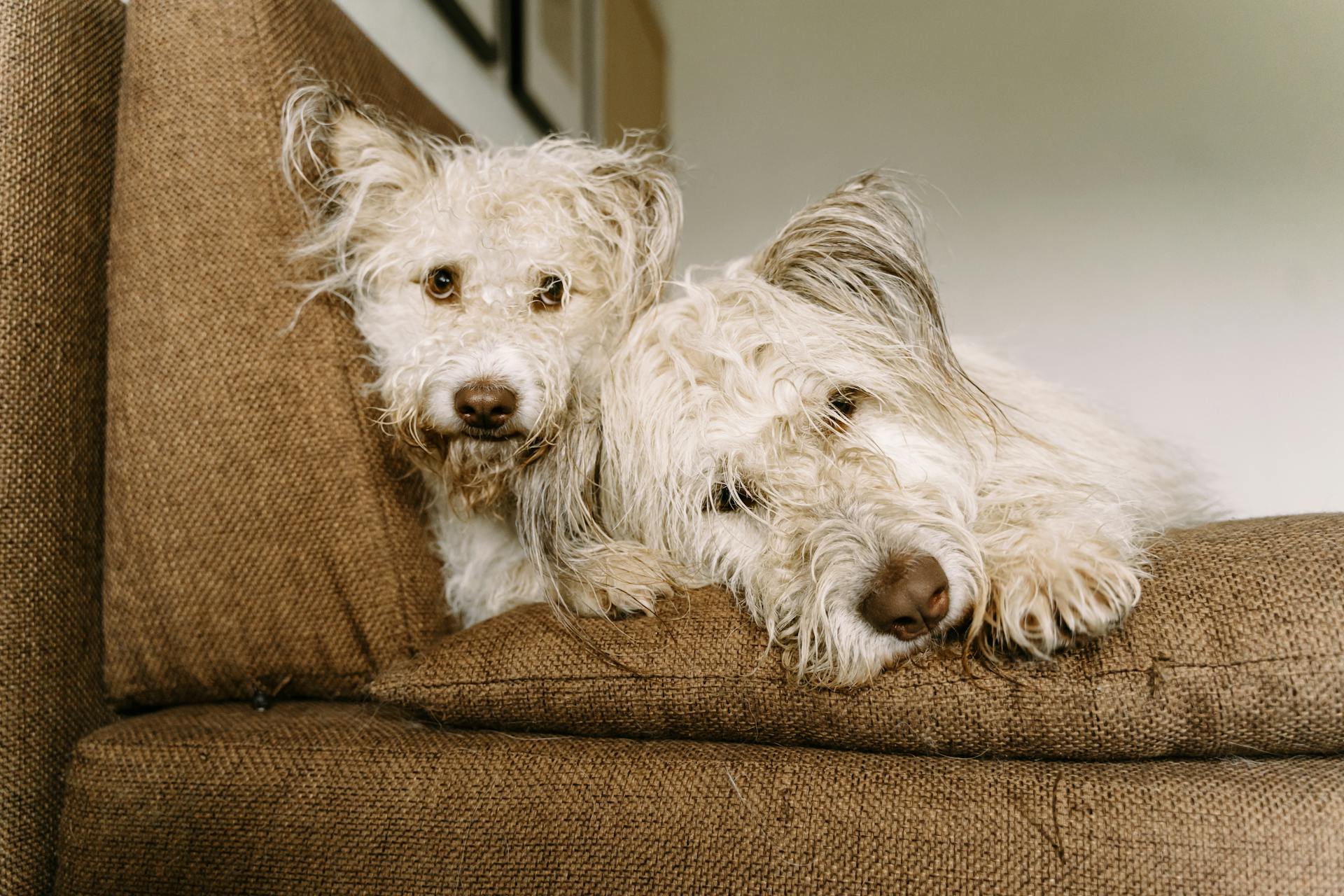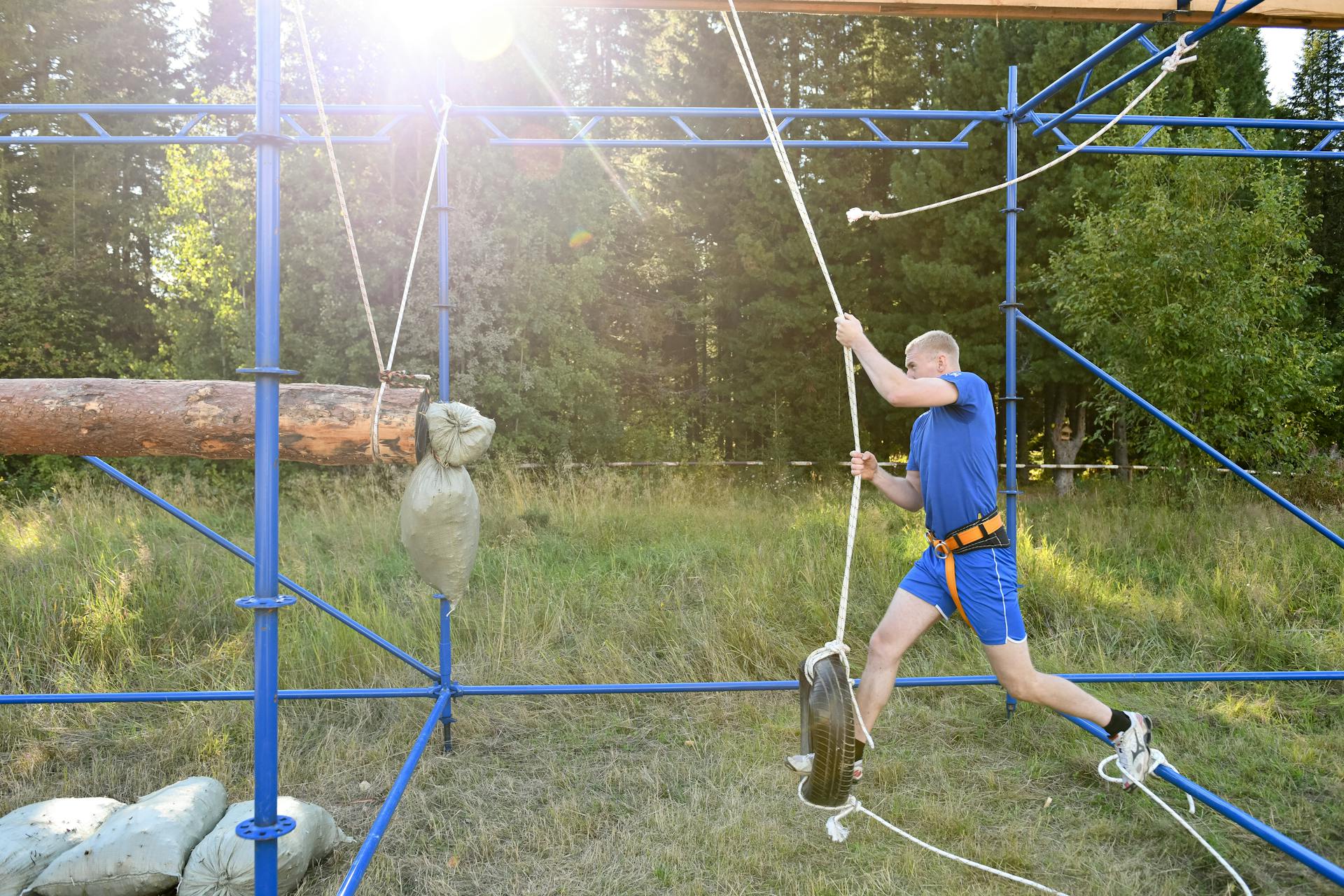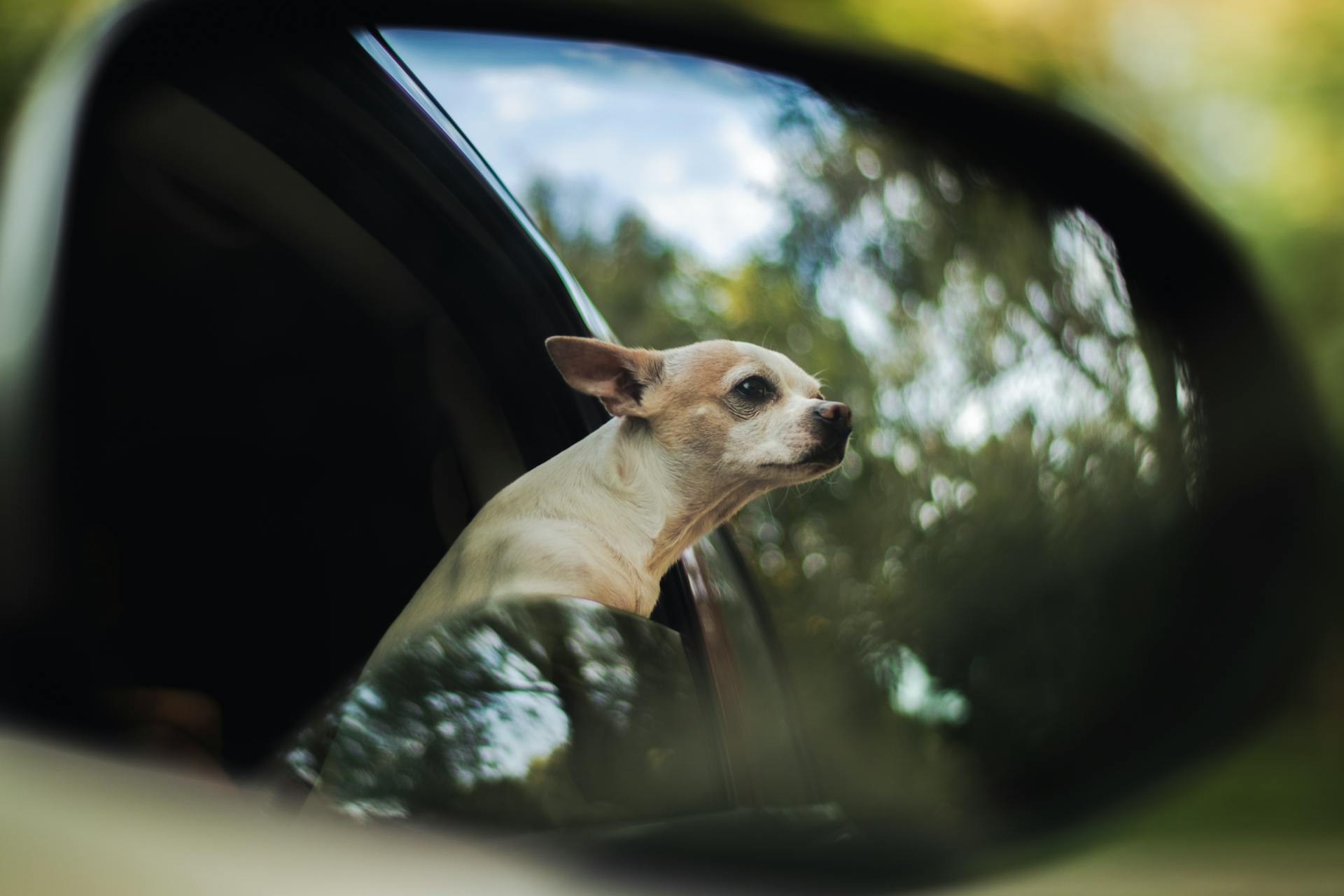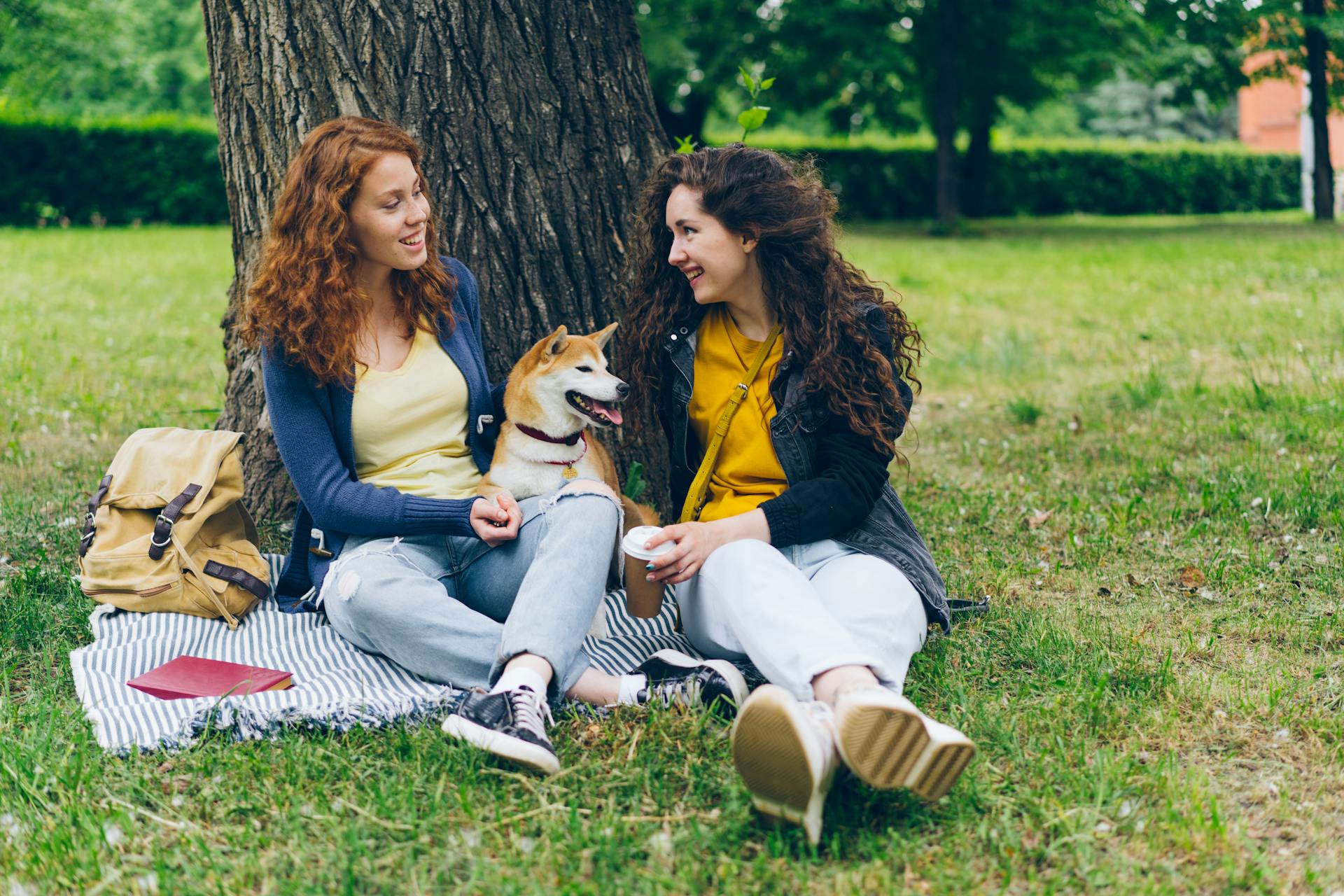
Separation anxiety in older dogs is a common issue that can be distressing for both the dog and their owner. It's estimated that up to 14% of dogs will develop separation anxiety at some point in their lives.
Older dogs are particularly susceptible to separation anxiety due to declining physical and mental health. As dogs age, they may experience cognitive decline, which can contribute to anxiety and stress.
Dogs that are left alone for extended periods of time are more likely to develop separation anxiety. This can be especially true for older dogs that may have a history of anxiety or have experienced a change in their environment.
Older dogs that are prone to separation anxiety may exhibit behaviors such as destructive chewing, barking, or howling when left alone.
Understanding Separation Anxiety
Separation anxiety in older dogs can be a challenging issue to address. It's essential to understand that this anxiety is not just about being left alone, but rather a deep-seated fear that can manifest in various ways.
The underlying problem of anxiety must be addressed prior to departure, at the time of departure, and at the time of homecoming. Reducing anxiety in these key moments can help alleviate the symptoms of separation anxiety. Consistency is key in retraining your dog to be less anxious during departures.
To prevent your dog from picking up on cues that signal impending departure, try to mix up your routine and avoid doing the same activities consistently before leaving the house. This can help your dog learn that these cues are no longer predictive of departure, reducing anxiety in the process.
If this caught your attention, see: Skin Care for Dogs with Allergies
What Is?
Separation anxiety in dogs is a real thing, and it's not just about being left alone. It's a state of extreme stress that can cause a dog to act as if they're terrified to be in the house on their own.
According to Patricia McConnell, Ph.D., a Certified Applied Animal Behaviorist, separation anxiety is equivalent to a panic attack in humans. This means that dogs experiencing separation anxiety are likely feeling intense anxiety and distress.
Dogs with separation anxiety can exhibit a range of symptoms, but they all share a common thread: they're desperate for their owner's return.
Normal Canine Behavior
Normal canine behavior is not the same as separation anxiety. It's the occasional mournful whimper when you leave the house, or a shredded sock waiting for you upon your return.
Boredom can also manifest in mischief when your dog is left alone, but it's not the same as separation anxiety. In fact, a little mischief is often a sign of a dog that's just looking for something to do.
A dog that's 100% potty trained and understands good manners, even when you're not watching them, is a good indicator of normal behavior. On the other hand, a dog that's not potty trained or is engaging in destructive behavior may be experiencing separation anxiety.
Getting audio or video footage of your dog's behavior while you're away can help you determine if they're experiencing normal canine behavior or separation anxiety.
For more insights, see: Is It Normal for Dogs to Burp after Eating
Causes and Diagnosis
Separation anxiety in older dogs can be caused by a single traumatic event, such as a house robbery, that occurs in the owner's absence.
A traumatic separation, like being abandoned in a shelter, can also trigger separation anxiety. This can lead to distress and destructive behavior when left alone.
Dogs that are never previously left alone may be more prone to separation anxiety.
What Causes?

Separation anxiety in puppies and dogs can be caused by a lack of previous experience being left alone, which can lead to a strong attachment to their owners.
A single traumatic event, such as a house robbery, can also trigger separation anxiety in dogs.
Traumatic separation, like what some abandoned shelter dogs experience, can make them more prone to separation anxiety.
Personality can also play a role, with clingy dogs being more at risk than independent ones.
Life changes like a sudden switch in schedule or a move to a new house can cause stress and anxiety in dogs.
The sudden absence of a family member, whether due to divorce, death, or a child leaving for college, can also contribute to separation anxiety.
Research suggests that a lack of daily exercise may be a possible cause of separation anxiety in dogs.
A unique perspective: My Older Female Dog Keeps Peeing in the House
Determining a Diagnosis
Determining a diagnosis of separation anxiety in dogs requires careful observation and evidence. A dog with separation anxiety will typically exhibit distress behaviors when left alone, such as chewing, vocalizing, pacing, or eliminating only in the owner's absence.
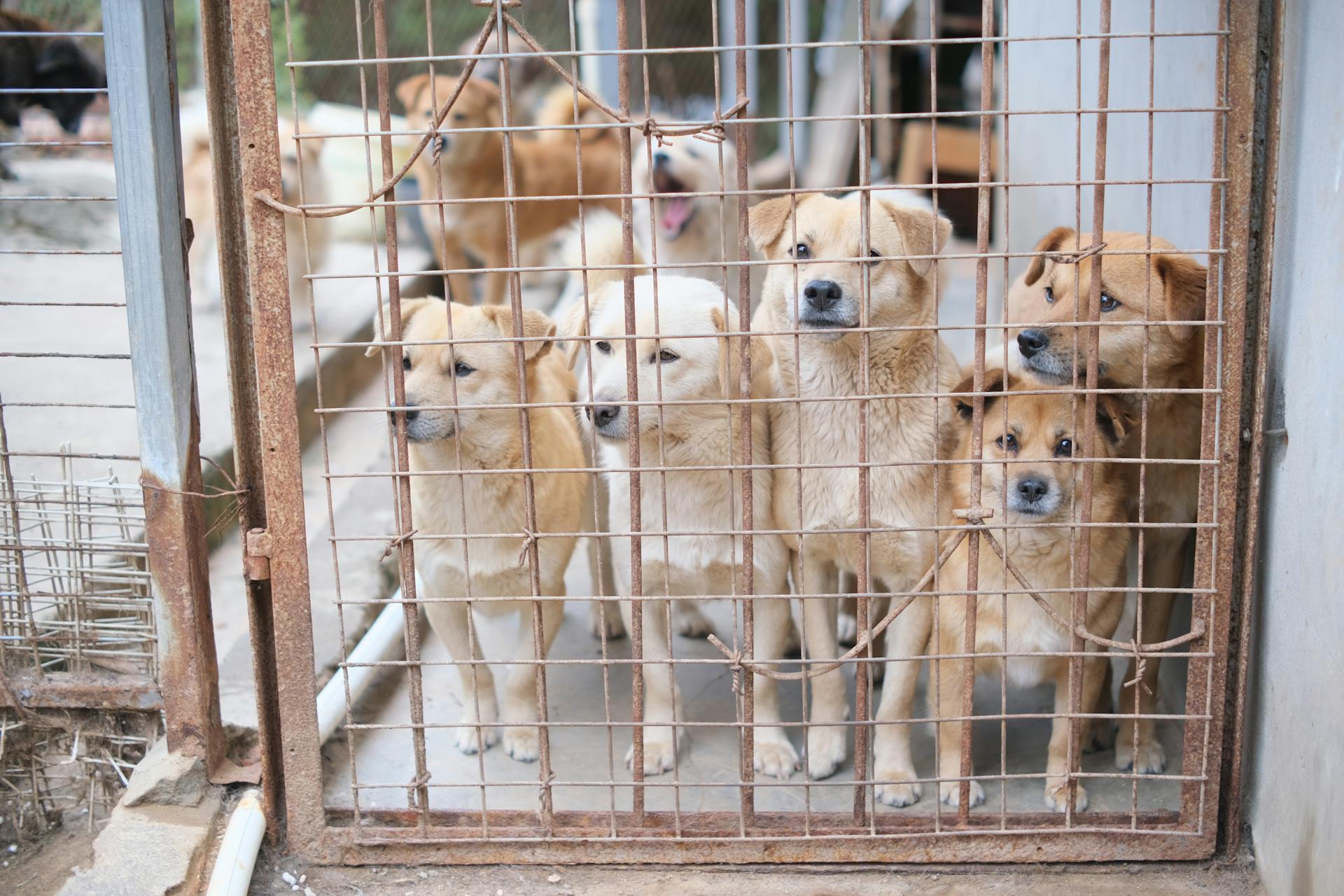
To confirm a diagnosis, it's essential to videotape or audiotape the dog when the owner is away. This will help identify if the dog is exhibiting distress behaviors immediately after or within 30 minutes of the owner's departure. Distress will typically be accompanied by pacing, whining, panting, and restlessness, rather than a playful or bored demeanor.
Some common symptoms of separation anxiety include trembling or salivating, digging and scratching at doors or windows, destructive chewing, howling, barking or whining, and urination and defecation, even in house-trained dogs. A dog may also exhibit anxious behaviors like pacing, whining, or trembling while the owner is gone or as they prepare to leave.
To distinguish between separation anxiety and other potential issues, it's crucial to consider the timing and context of the behaviors. For example, elimination in the owner's absence typically occurs soon after they leave, and is often accompanied by other distress behaviors. Incomplete house-training or medical illness can also mimic separation anxiety, so it's essential to rule out these possibilities through a thorough examination and medical testing.
Here are some common signs of separation anxiety to look out for:
- Trembling or salivating
- Digging and scratching at doors or windows
- Destructive chewing
- Howling, barking or whining
- Urination and defecation (even with otherwise house-trained dogs)
By observing and documenting your dog's behavior, you can help determine if they are suffering from separation anxiety and take steps to address the issue.
Reducing Anxiety
Reducing anxiety in older dogs requires a multi-faceted approach. One key strategy is to establish a consistent routine, including regular departure and return times, as recommended by Goetz.
A relaxed departure and return can help your dog feel more secure. Hamrick suggests keeping these times as chill as possible to avoid reinforcing anxiety.
To minimize the impact of owner departures, owners should not change noise levels, lights, or gates when leaving. This includes minimizing owner-dog interactions prior to the owner leaving and then returning.
Positive reinforcement training can be a valuable tool in reducing anxiety. Never punish your dog for separation anxiety behaviors, as punishment can increase anxiety.
Here are some ways to reduce anxiety in older dogs:
• Minimize difference between owner presence and absence
• Use white noise or calming music to create a soothing environment
• Provide a safe space, such as a room with windows and toys, instead of a crate
• Gradually increase time spent away from your dog to help them become more comfortable with your absence
• Use positive reinforcement training to teach your dog to relax and stay calm in your presence
Explore further: Healthy Mind Canine - Separation Anxiety Training
Treatment Options
To effectively treat separation anxiety in older dogs, it's essential to identify the underlying causes and develop a comprehensive plan.
First, work with your veterinarian to determine the best course of action, which may involve creating a safe haven for your dog to retreat to when you're away.
A safe haven can be a crate or a designated room where your dog feels secure and relaxed.
To manage hyper attachment, it's crucial to establish a baseline and track your dog's progress over time.
This involves monitoring your dog's behavior and adjusting your approach as needed.
In some cases, anti-anxiety medication may be prescribed by your veterinarian to help bring your dog's anxiety baseline down.
This can be especially helpful if your dog is exhibiting destructive behavior or causing harm to themselves.
Here's a step-by-step guide to treatment:
- Identify signalment and determine diagnosis
- Create a safe haven
- Investigate medical therapy
- Establish baseline & track progress
- Manage hyper attachment
- Desensitize to departures
- Always avoid punishment
Managing Departures
To manage departures, it's essential to reduce your dog's anxiety prior to, at the time of, and after departure. This can be achieved by giving your dog a safe haven where they can relax and focus on their surroundings.
To create a safe haven, provide a mat, open crate, or safe haven room where attention is offered when your dog is calmly sitting or lying down. This area can then be used when you actually depart.
To encourage independence from you, give your dog a food-dispensing toy, such as a Kong toy, to keep them occupied while you're away. A stay cue can also be used as a calming exercise, but only use it for training, not when you actually depart.
Desensitization can be helpful for dogs that become reactive at the moment of departure. This involves introducing repeated exposure or habituation to departure cues, such as picking up keys, turning off lights, and donning a coat.
Here are some steps to follow when desensitizing your dog to departure cues:
- Pick up keys, turn off lights, and don a coat without leaving the house.
- Gradually increase the duration of these departure cues while your dog remains calm.
- Repeat this process until your dog is no longer reactive to departure cues.
Once your dog has responded well to simulated departures and changes in departure cues, you can begin working on desensitization to actual departures. This involves starting with brief departures and gradually increasing the duration.
Preventing Hyper Attachment
Dogs that can't adapt to being separated from their owners may struggle with actual departures. This is why it's essential to encourage independence and teach your dog to relax when you're not around.
One way to do this is by providing a safe haven where your dog can relax and receive attention. This could be a mat, an open crate, or a designated room where your dog can calmly sit or lie down.
A food-dispensing toy, like a Kong toy, can help keep your dog occupied and calm when you're away. Simply fill the toy with treats and let your dog figure out how to get them out.
It's also crucial to use a mat or safe haven consistently and only when you're present. If you pick up the mat between training sessions, it can become a comfort cue that your dog associates with your presence.
To help your dog learn to relax and stay calm, practice a 30-minute stay exercise. This can be a great way to teach your dog to remain calm and focused, even when you're not around.
For more insights, see: Dogs Gums Bleeding When Chewing Toy
Here are some tips to help you create a safe haven for your dog:
- Choose a quiet and comfortable location where your dog can relax.
- Make sure your dog has access to fresh water and a comfortable place to lie down.
- Use a food-dispensing toy to keep your dog occupied and calm.
- Practice a 30-minute stay exercise to help your dog learn to relax and focus.
Remember, it's essential to involve your dog in the process of determining their safe place. Encourage them to choose a location that makes them feel comfortable and secure.
Tracking Progress
Tracking progress is crucial when helping your older dog overcome separation anxiety. A baseline for panting, pacing, urination or defecation, whining or barking, and digging/chewing is needed to determine whether treatment is working.
Recording your dog's behavior is a great way to track progress. A video camera can be aimed at areas where elimination or destructiveness has occurred, and recording 30 to 60 minutes will provide a reasonable idea of your dog's distress immediately after departure.
Audiotaping may be enough if barking is the primary complaint. This can be a good option if you're looking for a more discreet way to track your dog's behavior.
A journal of your dog's behavior is also helpful and should include (when relevant) elimination behavior outdoors as well as when you leave the house and return. This will give you a clear picture of your dog's behavior over time.
Take a look at this: Dog Barking at Other Dogs While Walking
To monitor progress, you should repeat video- or audiotaping as needed. This will help you see how your dog's behavior is changing over time.
Here are some tips for tracking progress:
- Video camera: Aim at areas where elimination or destructiveness has occurred, and record 30 to 60 minutes for a baseline.
- Audiotaping: Record for 30 to 60 minutes if barking is the primary complaint.
- Journal: Include elimination behavior outdoors and when you leave the house and return.
Sources
- https://vcahospitals.com/know-your-pet/separation-anxiety-in-dogs
- https://www.humanesociety.org/resources/separation-anxiety-dogs
- https://todaysveterinarypractice.com/behavior/on-your-best-behavior-canine-separation-anxiety/
- https://www.akc.org/expert-advice/training/dog-separation-anxiety/
- https://www.webmd.com/pets/dogs/features/dog-separation-anxiety-symptoms-and-solutions
Featured Images: pexels.com
